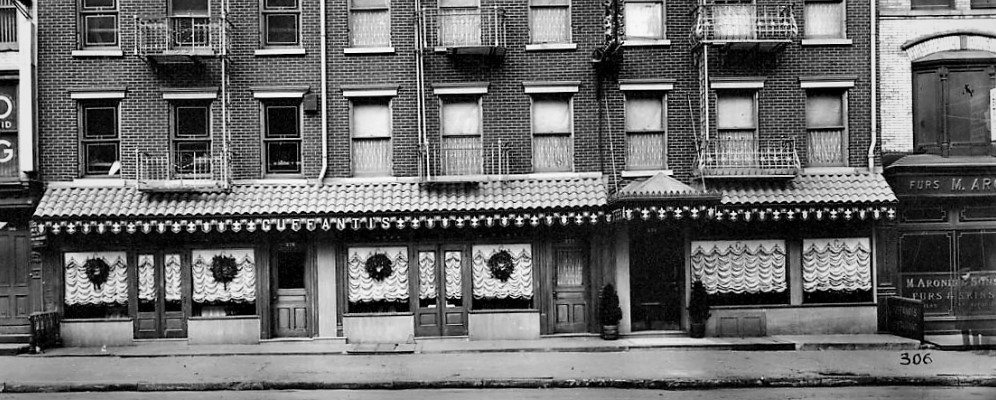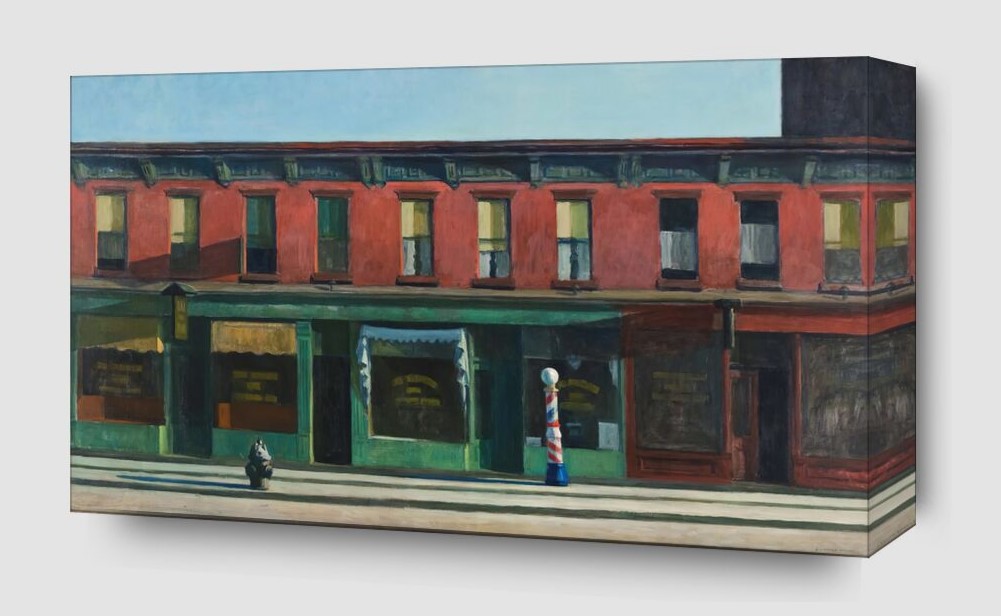Edward Hopper’s fascinating work, “Early Sunday Morning”, where the apparent serenity of Seventh Avenue becomes a canvas that goes beyond the simple tranquil scene.
This painting not only captures the essence of Economic Depression America, but unravels the real magic by exploring the lives of small shopkeepers and the profound social changes of the era.
Join us on this introspective journey through Hopper’s masterpiece, where every brushstroke tells a story of resilience and transformation in the complexity of American society.
Table of Contents
- The Artist Behind “Early Sunday Morning”
- Edward Hopper “Early Sunday Morning” -1930
- Analysis of “Early Sunday Morning” By Edward Hopper
- Interpretation of “Early Sunday Morning” — Edward Hopper
- Meaning of “Early Sunday Morning”
The Artist Behind “Early Sunday Morning”
Born in 1882, Hopper is distinguished by his distinctive style, marked by simple shapes and dark colors that play with contrasts of light and shadow.
Loneliness in American Art
His works, such as “House by the Railroad” and “Nighthawks,” reveal an ability to capture loneliness and social transformation in America.
From Advertising Illustrator to Visual Journalist
Hopper, after entering the New York School of Art, began his career as an advertising illustrator in 1908. However, his true passion was in painting and by 1915, he devoted himself to portraying American life.

Edward Hopper “Early Sunday Morning” -1930

Artist: Edward Hopper
Date: 1930
Movement: Social Realism
Medium: Oil on canvas
Dimensions: (89.4 × 153 cm)
Location: Whitney Museum of American Art
Analysis of “Early Sunday Morning” By Edward Hopper
It stands out as a representation of New York’s Seventh Avenue. Although, the missing details of road signs allow the scene to be universal of any American location in the 20th century.
Light & Shadows
The bright sunlight and the shadows cast by the barber pole and fire hydrant reveal the early morning hour. The sun, still low on the horizon, sugge“ts the start of a new day, while the absence of people in the scene indicates a quiet Sunday atmosphere.
Hopper uses these contrasts of light and shadow to create a unique, almost theatrical atmosphere on a deserted street.
Visual Description
A horizontal work three feet high by six feet wide, it features three two-story buildings with stores on the first floor and apartments above.
- Celestial Background: The blue sky, dark to the left and lighter to the right, dominates the buildings.

- Urban elements in focus: Details such as the fire hydrant and the barber pole with red, white, and blue diagonal stripes provide landmarks.




- Contrast: The intense red color of the second floor contrasts with the curtains of different shades in the windows.

Interpretation of “Early Sunday Morning” — Edward Hopper
The painting immerses us in a scene that can be interpreted in several ways: as a tranquil image of small stores closed on a Sunday morning, or as a subtle commentary on the Depression-era economy in the United States.
The duality in perception is intertwined with Hopper’s own words, who pointed out that the inclusion of “Sunday” in the title was someone else’s work. However, he did not dislike it.
Shadows and Conflict
The shadows cast from the right suggest a subtle conflict between small traders and larger, undefined forces.
The passage of dark brown paint in the upper right corner symbolizes the possible encroachment of the business world, adding a layer of complexity.

Eliminating Elements
The artist included a person in the second flo“Sunday”w, but decided to remove it. The reason? The architecture itself expressed his feelings. This decision emphasizes Hopper’s emotional connection to the scene and highlights the symbolic importance over the concrete.
Meaning of “Early Sunday Morning”
- Representing the essence of America: Details, such as the barber pole and white curtains, evoke the lifestyles of small stores across the country.
- Storefronts: Although they do not reveal the types of businesses, they propose the offer of affordable goods and services.
- During the economic Depression: Small businesses, especially those focused on essential services, proved resilient, providing items such as shoes, clothing, food and medicine to a needy society.
The continuous arrangement of the stores in the painting reinforces the horizontal format of the canvas, highlighting the ubiquity of small stores in America. These establishments not only survived, but thrived, serving local communities and maintaining a vital connection during difficult times.

- “Early Sunday Morning” is not a painting of Seventh Avenue exactly, but a canvas that manages to capture the very essence of the economic depression.
- Through the meticulous depiction of small stores, Edward Hopper weaves a narrative that transcends apparent tranquility, exploring deep themes of resilience, struggle, and the intricate interplay between small merchants and larger economic forces.
- Hopper invites viewers to reflect“on events in American life, leaving a lasting imprint on the history of realist art.



